
Are you dissatisfied with your facial appearance? Do you often wish that you could make some changes? If so, plastic surgery may very well be a great option for you. You have probably heard the term plastic surgery, but did you know that there are several different types of these procedures? To learn which procedure you could possibly benefit from, please read on.
Facelifts
Facelift surgery can restore a more youthful and natural look to your face. With a facelifts, you can boost your self-confidence and allow yourself to age much more gracefully.
Due to today’s modern technologies and advances, facelift surgery can now correct a vast array of issues. Surgery can help, whether you want to change a facial feature you had since birth or one that was caused due to an accident. With a facelift, a board certified plastic surgeon can correct some of the most common facial issues including:
- Facial Wrinkles or Creases
- Loose Skin on the Neck
- Sagging Cheeks
- Loose Skin in the Jaw Area (Jowls)
For further details about this procedure, please see our Facelift Procedure page. Additionally, Dr. Lent invites you to view his Facelift: Before and After page to see patients who have had a facelift with him.
Laser Eyelid Surgery
As people age, the skin of their upper eyelids often begins to droop or sag giving their face a tired look. In extreme cases, it can even impede proper vision. Additionally, many people, as they get older, experience puffy eyes or “bags” under their eyes.
Fortunately, there is a form of facial plastic surgery that can correct all of these problems. It is known as laser eyelid surgery. A board certified plastic surgeon who performs laser eyelid surgery can correct some of the most common facial issues including:
- No External Incisions Are Necessary for the Lower Lids
- Less Chance of Post-Op Swelling
- Safer than Traditional Eyelid Surgery
- More Effective than Traditional Eyelid Surgery
For more information about this procedure and why using the laser is so important, see our Laser Eyelid Surgery procedure page. Additionally, Dr. Lent invites you to view his Laser Eyelid Surgery: Before and After page to see patients who have had this procedure with him.
Rhinoplasty/Nose Surgery
Nose surgery, medically known as rhinoplasty, is perhaps one of the most common cosmetic procedures performed today. The nose is the most prominent feature of your face. If you do not like the appearance of your nose, your self-confidence can drop.
With rhinoplasty, a plastic surgeon can correct problems you may have with your nose since birth as well as those that were caused due to an accident or injury. While people may consider rhinoplasty/nose surgery for a variety of reasons, some of the most common include:
- Overly Large Nose
- Overly Small or Thin Nose
- Deformed Nose
- Asymmetry of the Nose
- Nose Injuries that Did Not Heal Properly
- Difficulty Breathing through the Nose
For further details about this procedure, please see our Rhinoplasty/Nose Surgery procedure page. Additionally, we invite you to view his Rhinoplasty/Nose surgery: Before and After page to see patients who have had a nose surgery with Dr. Lent.
Laser Skin Resurfacing
The sun, smoking, and acne can damage your skin making it look wrinkled, dull, and lifeless. If you are facing these problems, laser skin resurfacing can help to give you back your fresh and glowing appearance. This procedure works by smoothing your skin and encouraging the production of healthy new skin cells.
A plastic surgeon can perform laser resurfacing either while you are awake or sedated. The entire healing process only takes about one to three months. There are many facial issues that this procedure can help correct including:
- Damage Due to the Sun
- Acne Scars and Other Facial Scars
- Age Spots and Brown Patches
- Small Facial Wrinkles
- Small Bumps on the Skin
For further details about this procedure, please see our Laser Skin Resurfacing procedure page. Additionally, we invite you to view his Laser Skin Resurfacing: Before and After page to see patients who have had this procedure with Dr. Lent.
Otoplasty/Ear Pinning
Ears come in many different shapes and sizes. The ears can also change as people grow older. Of course, ear shape and size can affect the way people feel about themselves, especially if they are children. Thankfully, there is a procedure that can help. It is known as ear reshaping or otoplasty.
Also referred to as ear pinning, otoplasty is a relatively quick outpatient procedure that can correct several problems of the ears including:
- Protruding Ears
- Asymmetrical Ears
- Overly Large Ear Lobes
- Malformed Ears
For further details about this procedure, please see our Otoplasty/Ear Pinning procedure page. Additionally, we invite you to view his Ear Pinning: Before and After page to see patients who have had this procedure with Dr. Lent.
Facial Implants
Most cosmetic surgeons will agree that the key to a pleasing facial appearance is balance. People who have a large nose and hollow cheeks, for example, will most likely be displeased with their appearance. This is just one example of the many balance-related issues that people may experience with their faces.
With facial implants, cosmetic surgeons can add volume to various areas of the face. Facial implants can balance out your facial features and provide you with a more pleasing and youthful appearance. Some of the issues that can benefit from facial implants include:
- Overly Small Chins
- Overly Small Noses
- Hollow Cheeks
- Thin Lips
For further details about this procedure, please see our Facial Implants procedure page.
Forehead Brow Lift
After years of frowning or scrunching your eyebrows in thought, many people develop forehead creases and/or drooping eyebrows. Not only can this make you appear older; it can also take quite a toll on your self-esteem. However, with the help of forehead brow lifts, these problems can be reversed.
Forehead brow lifts are fairly simple procedures that work by smoothing or stretching affected skin. When combined with laser skin resurfacing and/or laser eyelid surgery, you can quickly regain a young, fresh appearance. Forehead brow lifts are safe procedures that only require about two to four weeks of recuperation time (For further details about this procedure, please see our Forehead Brow Lift procedure page.
Make an Appointment for Your Consultation
If you are unhappy with the appearance of your face, facial plastic surgery may be the perfect option for you. There are many different forms of plastic surgery for your face. The above procedures are the most common. Whether you have an issue with facial wrinkles, your nose or your eyelids, plastic surgery procedures can help.
Here at Dr. Warren Lent’s office, we show care for each patient from the initial consultation to the final post-surgery call. We look forward to hearing from you. For more information about a specific facial procedure, costs, or questions, please contact us at:
150 North Robertson Blvd. Suite 140
Beverly Hills, Ca 90211
More Information About Facial Plastic Surgery
Tissue Removed During Facelifts Can Be Used for Lip Augmentation
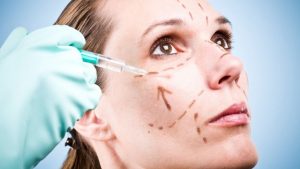 A recent study carried out in the U.S suggests that those who use plastic surgery to lift up sagging cheeks and jowls may be able to use some of the tissue removed during the surgery to plump up their lips.
A recent study carried out in the U.S suggests that those who use plastic surgery to lift up sagging cheeks and jowls may be able to use some of the tissue removed during the surgery to plump up their lips.
The study found that five years after receiving a facelift followed by lip augmentation using leftover tissue patients still had significantly fuller lips than they did before the procedure. However, the results weren’t as pronounced as they were at three months or one year.
The lead author on the study, Dr. Matthew Richardson, said that the technique gives those having a facelift a way to use their own tissue which would otherwise normally be discarded with minimal risk of complications. However, usually those who have already had a facelift cannot undergo the procedure as the tissue used for lip augmentation is normally removed during the first facelift.
The study focused on a procedure that plumps up the lips with tissue taken from what’s known as the superficial musculoaponeurotic system (SMAS), a layer of tissues under the skin of the face.
In order to measure the long-term safety and effectiveness of the procedure researchers tracked 60 people for five years examining photos to see how plump lips stayed over time and which, if any, complications arose.
Just two patients had complications that required additional treatment, one to relieve swelling and the other for nodule removal.
According to an analysis of photos from a subset of 26 patients at three months, one year and five years both the upper and lower lips were fuller compared to before the facelifts and lip augmentation.
However, the authors did note that some people were missing at least one picture and others had to be excluded as they’d received additional cosmetic lip procedures during the study.
Those interested in undergoing the procedure should also be aware that it is unlikely to be covered by insurance and in most instances will cost something in the region of $5,000 to $8,000. Nonetheless, those interested can be reassured by the study as it showed that the procedure can be carried out safely and with long last effects.
What You Should Know About Rhinoplasty
 Rhinoplasty is a cosmetic surgical procedure that can provide you with a beautifully proportioned face by reconstructing the size and shape of your nose. Although rhinoplasty patients are usually significantly pleased with their results there are a number of factors to consider that will determine if this aesthetic surgery is right for you.
Rhinoplasty is a cosmetic surgical procedure that can provide you with a beautifully proportioned face by reconstructing the size and shape of your nose. Although rhinoplasty patients are usually significantly pleased with their results there are a number of factors to consider that will determine if this aesthetic surgery is right for you.
The very first factor in committing to rhinoplasty is to determine what your needs and desired expectations are. Rhinoplasty is not limited to creating a new size, shape and proportion for your nose. It is often most affective in correcting undesirable bumps and crookedness possibly caused by a broken nose. Assuming you will resemble a specific person is an unrealistic expectation of rhinoplasty. However, striving to improve your own individual appearance is an achievable goal that is an ideal expectation of rhinoplasty. Promising rhinoplasty candidates are individuals whom are considering the surgery in order to improve details of their nose such as: proportioned width from the bridge of the nose to the base, overall size of the nose in proportion to the rest of the face, improved nasal asymmetry, improved nasal profile, straightening of the nose, removal of bumps or bulges in the bridge of the nose, size reconstruction of the nostrils and also tip of the nose adjustments.
The second factor to carefully consider prior to committing to rhinoplasty is the technique that is required to achieve your desired results verses the risks in application of that specific technique. There are typically two techniques used in rhinoplasty as follows:
Open rhinoplasty allows the surgeon a precise detailed view of the internal nasal structure by way of temporary elevation of nasal skin. An incision to the columella, the underside of the nose, is made as well as an added interior incision that temporarily exposes the nasal passage for a significantly detailed view during the procedure. These incisions are repaired once the surgeon is finished performing the surgery and may cause a slight scar. Though open rhinoplasty is the more extensive technique of the two, it is also the most effective in terms of durability and desired results.
Closed rhinoplasty is a technique used for a more simplified procedure that does not require as much nasal reconstruction and does not result in predominately noticeable scaring risks. There is no incision made to Columella in closed rhinoplasty but rather a few incisions to the nostrils interior.
Rhinoplasty risks are usually linked to undisclosed pre-existing medical conditions rather than the actual cosmetic procedure itself. This is why it is highly recommended that you consult with a surgeon in full disclosure prior to proceeding with any cosmetic surgery including rhinoplasty. Slight bruising and swelling is common however more serious risks include infection, adverse reaction to anesthetics used during the procedure, as well as amplified bruising and swelling, and difficulty breathing through the nose.
Consultation with the performing surgeon is a must when considering rhinoplasty cosmetic surgery. During your consult you should be prepared to discuss what your current complaints or discomforts with your nose are, any concerns and questions you may have regarding the procedure, the recovery process and what your expected results are and exactly what they will be.
Your performing surgeon will ask you to disclose any medical conditions as well as your medical history during your consult. Rhinoplasty does require you to be sedated during the surgery. Your surgeon will discuss with you which anesthetic option is recommended and go over them with you in full detail. Dependent on your preference, health condition or complexity of the work you are going to have done, you will have two sedative options. Although IV conscience sedated patients will spend less time in the recovery room, most rhinoplasty candidness prefer the general anesthesia option. Regardless of which sedative you opt for you will be unable to operate a vehicle post operation. Your surgeon will inform you that you must have someone accompany you to and from the operative site. The surgeon will discuss any and all preparation you must be willing to take pre and post-surgery during this consult.
As with any surgery, rhinoplasty does demands some preparation. Preparation for rhinoplasty may not seem very complex but the following requirements are essential to achieving the healthiest and best possible results. Your rhinoplasty surgeon will advise you to take extra precautions in remaining physically healthy prior to your surgery and throughout the healing process proceeding your rhinoplasty. In consult, the surgeon will discuss the importance of a vitamin enriched diet to promote affective accelerated healing and what is important to avoid prior to and during your surgery and healing. A few specifics will be to cease smoking cigarettes two weeks prior to your rhinoplasty date as a precaution to decrease the risk of blood clotting. Your rhinoplasty surgeon will also advise you to cease consumption of any prescription and non-prescription medications that thin the blood. Avoid sun exposure and notify your surgeon of any skin irritations you may acquire prior to your rhinoplasty date. Skin irritation such as redness or dryness due to a cold or the flu may decrease your ability to heal quickly so your surgeon will advise you to notify the office and postpone your procedure if this occurs. The surgeon will advise you to keep the skin clean and clear. Do not apply any creams, lotions or makeup to your face on the day of your rhinoplasty. Preparation instructions will also include that you do not eat or drink anything after 12am the night before your procedure.
During your consult your surgeon will also discuss your recovery procedure in detail. Completion of your rhinoplasty can take anywhere from 2 to 4 hours, possibly longer depending on your reaction to the sedative you chose. Full recovery that reveals the true form and shape of your final results from rhinoplasty can vary dependent on the patient as well as the complexity of the surgery. Some candidates report the true and final rhinoplasty results did not surface visually until up to a year after the procedure. These rhinoplasty recipients reported continuous change of shape or size throughout their recovery.
Immediately following the aesthetic surgery the surgeon will tape down and cast the bridge of your nose as well as the tip. This is to help drain any fluid and to assist in diminishing excessive swelling. The cast however, is removed within the first 1 to 2 weeks. The most significant change in the appearance of your rhinoplasty results will surface within two to twelve weeks. Candidates have also reported temporary side effects during recovery such as facial stiffness, slight facial muscle strain or feeling of paralysis resulting in difficulty with facial expression. Once the swelling from the rhinoplasty subsides these side effects vanish as well.
Finally, another determining factor regarding your commitment to rhinoplasty is cost. The cost of rhinoplasty varies from candidate to candidate. This is because the surgeon will base your estimate on your specific desired requests such as the sedative you chose and the areas of your nose you wish to have corrected. The estimated cost is also reflective of the technique required to achieve these results as well as whether or not the rhinoplasty is covered by your insurance carrier. In most cases rhinoplasty is not covered by insurance companies unless it is necessary for proper nasal functionality. During your consultation with Beverly Hills plastic surgeon, Dr. Warren Lent, you will receive a cost estimate that includes sedative options, surgeon fees and facility fees.
Rhinoplasty is not for everyone, yet for candidates whom have suffered with a dysfunctional nasal passage or poor self-esteem and self-confidence due to nasal imperfection, rhinoplasty has the ability to affectively improve not only your appearance but also your quality of life.
What To Expect After Eyelid Surgery
 As one would expect, eyelid surgery (blethroplasty) involves a recovery period. Being informed on what to expect after the procedure is as important as knowing what to expect during the actual procedure.
As one would expect, eyelid surgery (blethroplasty) involves a recovery period. Being informed on what to expect after the procedure is as important as knowing what to expect during the actual procedure.
What to expect after the procedure
Patients who undergo a blethroplasty usually do so on an outpatient basis. Patients very rarely need to stay overnight in the hospital overnight. Your surgeon will decide what the best option is for your specific situation.
In regards to the recovery process, expect swelling and redness at the incision sites. You may have excessive tearing as well, but not always. You will experience tenderness, but the level pain will vary from patient to patient, as expected, but most patients experience almost no pain because of the unique laser method used by Dr. Lent. Most patients only experience mild discomfort up to five days. Over-the-counter pain relievers can be taken as needed.
If the blethroplasty only involved removal of skin, then swelling and bruising will fade within several days. If fat was also removed in conjunction with skin, then expect to see the majority of swelling recede within one to two weeks.
When can I return to work
Patients can return to work within 3 -5 days after the procedure as long as no bending over, heavy lifting or physical exertion is required. Makeup can be used cover any residual bruising. Eye makeup such as eye shadow and eyeliner can be worn after seven days.
Physical fitness
It is recommended that patients refrain from high-impact exercise for a period of two to three weeks.
What if I wear glasses?
Patients can use their glasses immediately after surgery, but will need to wait for one or two weeks before using contact lenses.
Patients should be diligent with the application of sunscreen. Apply with a SPF of 15 of higher liberally to the eye area for six months. The skin will be sensitive and you do not want it to burn.
Thin skinned is not always bad
 In patients with ultra thin skin, rhinoplasty incisions heal with minimal scarring. Swelling, for thin skinned patients, appears to be no problem, but the imperfections in the nasal skeleton may present a problem once the swelling resolves. The tendency for skin to shrink may also cause undesired results. But, if you have ultra thin skin and you still want or need rhinoplasty, do not lose hope. There are ways to avoid all of the above issues from taking place.
In patients with ultra thin skin, rhinoplasty incisions heal with minimal scarring. Swelling, for thin skinned patients, appears to be no problem, but the imperfections in the nasal skeleton may present a problem once the swelling resolves. The tendency for skin to shrink may also cause undesired results. But, if you have ultra thin skin and you still want or need rhinoplasty, do not lose hope. There are ways to avoid all of the above issues from taking place.
Today, a flawless, smooth and sturdy framework can be achieved. When a patient with ultra thin nasal skin opts for rhinoplasty several methods can be used to achieve a perfectly flawless look. One method is to thicken the skin with injections. Subcutaneous blanket graphs are often used. These graphs are fashioned using living dermas. The graphs do require that there be a healthy cutaneous blood supply. Thin skin is also prone to spider veins which can readily be remedied through the use of vascular laser treatments.
A consideration when opting for rhinoplasty are the results you wish to achieve. If you are looking only for improvement in looks, then you will probably be satisfied with the results. Keeping your expectations realistic are quite important. If you have a reasonably attractive nose, your result will be modestly improved. For patients with more severe deformities, rhinoplasty can dramatically transform one’s looks.
A word to the wise is to avoid multiple surgeries. The first surgery in rhinoplasty is almost always the best outcome. Further surgeries may further complicate matters especially for the ultra thin skinned patient. If you
can achieve the look you want from the very first surgery you would be wise to stop there. The one most important decision you will be making is choosing the right surgeon. A few tips to follow to assure a successful choice are imperative. First make sure they are bored certified and have a valid medical license. Check their malpractice history. Use a surgeon who has a specialty regarding procedures and outcomes. Don’t be afraid to get references. Word of mouth, internet endorsements, surgical portfolio and being in good academic standing are must for you to research. Last but not least is to make sure your doctor takes the time to sit and consult with you. Agree on a plan of action and look at past work and photos of previous patients.
Plastic Surgery and Stars
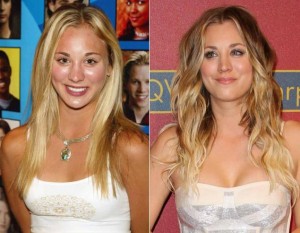 Many women who choose to have their breasts augmented are happy to talk about it to their friends and family. They discuss the pros and cons of the procedure, ask for advice as to which surgeon to choose and pick their friends’ brains about recovery time, possible pain and the size of implant they should get. There are countless websites, blogs and forums solely dedicated to plastic surgery, providing a platform for people to share their plastic surgery stories, ask for advice or simply look at the incredible results achieved through plastic surgery procedures. Famous actresses on the other hand, who are constantly in the public eye usually choose not to disclose if they had any plastic surgery done and often refuse to even comment on any questions on the topic. In fact the only time actresses are rumoured to have undergone plastic surgery is when the results are clearly visible or the procedure did not turn out as planned.
Many women who choose to have their breasts augmented are happy to talk about it to their friends and family. They discuss the pros and cons of the procedure, ask for advice as to which surgeon to choose and pick their friends’ brains about recovery time, possible pain and the size of implant they should get. There are countless websites, blogs and forums solely dedicated to plastic surgery, providing a platform for people to share their plastic surgery stories, ask for advice or simply look at the incredible results achieved through plastic surgery procedures. Famous actresses on the other hand, who are constantly in the public eye usually choose not to disclose if they had any plastic surgery done and often refuse to even comment on any questions on the topic. In fact the only time actresses are rumoured to have undergone plastic surgery is when the results are clearly visible or the procedure did not turn out as planned.
Now the trend is slowly changing. As plastic surgery becomes more widely accepted and part of our everyday lives actresses and even actors are more willing to admit that they too are human and are using the help of plastic surgeons to keep the youthful, beautiful look they are so famous and applauded for. In a recent interview Kaley Cuoco-Sweeting of The Big Bang Theory fame revealed that she has undergone breast augmentation surgery and is incredibly happy with the results: “I had no boobs! And it really was the best thing ever! I always felt ill-proportioned. My implants made me feel more confident in my body. It wasn’t about trying to be a porn star or wanting to look hot and sexy.”
The TV star’s comment shows that old-fashioned perception of breast augmentation being solely the prerogative of porn stars is now truly a thing of the past. As Cuoco-Sweeting points out the real goal of breast augmentation surgery is to make the patient feel confident and beautiful in their skin by achieving a proportionate and harmonious overall look. The goal of the surgery is to attain a naturally stunning look with the minimum possible risk. American Board of Plastic Surgery certified plastic surgeon Dr Warren Lent believes that the best way to turn patient’s dream into reality is to come up with a plan that will suit the needs and expectations of each individual patient while keeping their wellbeing and safety as the most important consideration. This way results worthy of the most stunning Hollywood actresses will be possible for everyone.
Plastic Surgery Trends in 2015
Plastic surgery procedures are growing in popularity with every passing year and it looks as if 2015 will be no different. While in 2014 the most popular procedures included neck rejuvenation and buttock augmentation, the year 2015 is set out to have a surge in the number of various other procedures. The popularity of certain plastic surgery procedures over others is dictated by a number of factors. Firstly, constant advances in the field of plastic surgery mean that new and better approaches are developed by plastic surgeons which translate to more effective, less invasive and more natural looking results for the patients. Secondly, as in any field of the aesthetic industry, fashion and word of mouth play a very significant role. If a procedure worked for one patient and they were satisfied with the result they are likely to tell their friends and family about it, spreading the popularity of their chosen procedure. Finally, as plastic surgery procedures become part of our everyday discussions, groups of patients who previously felt shy or embarrassed are now also opting to explore plastic surgery procedures. Men, patients with “embarrassing” problems or complaints, older patients as well as teenagers are all part of the growing number of people who are choosing to change their lives for the better through plastic surgery.
One of the fastest growing plastic surgery procedures of 2014 that is likely to maintain its popularity in 2015 are procedures that targets an area of the body that many people feel uncomfortable about – the neck and jaw line. As we age the skin around the jaw line and neck area loses its elasticity and becomes saggy and unattractive while extra fat under the skin adds to the problem. It is one of the tell-tale signs of aging that many patients wish to get rid of, or at least significantly improve, in order to regain their youthful appearance. An increasingly popular procedure targeting this problem area is fat removal around the neck and jaw line. Fatty tissue accumulates around the jaw line and the fat is removed with liposuction surgery. The result is a smoother, more contoured jaw line and a tighter, more youthful looking neck area. In 2015 procedures focused on the neck and jaw line are forecasted to remain just as popular as in the previous few years. In addition, a new injectable contouring drug is currently in its last stages of clinical trial making a non-invasive approach to neck and jaw line procedures more a thing of the present, rather than the distant future.
A buzz-word that permeates the entire field of plastic surgery is “volume”. An unavoidable part of the aging process is loss of volume in the facial features such as cheeks, lips, and the under-eye area. While it is important to maintain a strict facial skincare routine, no amount of cosmetics will counteract the effects of deep level volume loss. As a result, patients are eager to undergo procedures aimed at restoring volume and a youthful glow to the face. Fillers such as Restylane or Juvéderm are still gaining popularity among patients and fat injections are also on the rise. The most important aspect of volume restoration is choosing the right fillers in order to end up with seamless, beautiful and glowing results.
Other popular plastic surgery procedures in the last year included procedures aimed at young mothers, also known as the “mommy makeovers”. This set of procedures targets areas that are typically problematic for post-pregnancy women. The “mommy makeover” can entail a tummy tuck, liposuction, breast lift and dermatological procedures. Along with “mommy makeovers”, fat grafting (fat transfer) for breast augmentation has gained popularity in 2014 and procedures aimed at men are at an all-time high. While previously men opted for liposuction almost exclusively on their breast area, 2014 marked a definite change in attitudes with an increasing number of male patients looking to improve the appearance of their midsection. Similarly to women, fillers and Botox treatments were very popular amongst men and this trend is expected to continue well into 2015. Though plastic surgery and cosmetic procedures will continue to gain popularity in 2015, some procedures are likely to attract less patients then before. Non-surgical approaches to fat removal seem to be losing popularity as patients realize that longer lasting, more dramatic results can be achieved by a skilled plastic surgeon.
2015, just as 2014 was, will be characterized by patients asking for the most natural-looking, beautiful and seamless results with the lowest possible risks. Trends and fashions may change but choosing a US board-certified experienced plastic surgeon will ensure the successful outcome of any plastic surgery procedure and will make patients face each and every New Year with a smile.
Botched Plastic Surgery
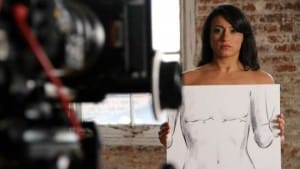 The first and most important factor in receiving the best possible plastic surgery results is choosing a skilled, experienced and knowledgeable surgeon. While many patients spend a long time researching what type of procedure they would like to have performed, looking at before and after photos and dreaming about the beautiful results following the procedure, it is important to keep in mind that without the help of a good plastic surgeon it is impossible to achieve the desired results. Also, patients tend to forget that like any other medical procedure plastic surgery carries a set of risks and entails possible complications so having a doctor who puts the patient’s safety first is paramount.
The first and most important factor in receiving the best possible plastic surgery results is choosing a skilled, experienced and knowledgeable surgeon. While many patients spend a long time researching what type of procedure they would like to have performed, looking at before and after photos and dreaming about the beautiful results following the procedure, it is important to keep in mind that without the help of a good plastic surgeon it is impossible to achieve the desired results. Also, patients tend to forget that like any other medical procedure plastic surgery carries a set of risks and entails possible complications so having a doctor who puts the patient’s safety first is paramount.
There are a number of reasons why plastic surgery patients can end up with an unqualified surgeon and a botched procedure. Costs of procedures performed by unlicensed or unqualified physicians can be much lower than those of US board certified surgeons as they are not bound by the strict medical regulations of the board. In other cases, patients who are normally extremely well-read up on the actual procedure they are planning to undergo fail to check the credentials of the surgeon as they have innate trust in doctors. In some instances the desire for a procedure can be so great that it overshadows considerations of safety and people are willing to settle for an unqualified doctor just to have the procedure done.
That is exactly what happened to Nafsika Lourentzatos, a New York City event-planner who dreamed of having her breasts enlarged from a young age. A friend told her of a procedure where silicone is injected to the breasts as an alternative to breast augmentation and the physicians she recommended were even willing to perform the procedure on an underage Ms Lourentzatos. After undergoing the procedure Ms Lourentzatos noticed no visible difference in the size of her breasts and felt that the procedure, which cost less than half of a traditional breast augmentation surgery was in vain but at least left her with no visible scarring or any other ill effects. Unfortunately, just a few years following the procedure she noticed lumps in her breasts and chest plate and had to turn to a doctor for help. It turned out that the injected silicone caused immeasurable damage to Ms Lourentzatos’s chest area and she had to have her breast removed to avoid the silicone entering her blood stream. What followed was a long series of painful corrective surgeries and a deep psychological trauma. She later found out that the “medical professionals” who performed her procedure were arrested in Colombia as they had no license to practise medicine in the US.
According to the American Society of Plastic Surgeons cases such as that of Ms Lourentzatos are common and they advise all patients to check their surgeon’s credential s before embarking on a consultation. They stress the importance of confirming that the surgeon is a certified by the American Board of Plastic Surgery and if the facility hosting the operation is accredited.
What are potential complications and risks in a nose like mine?
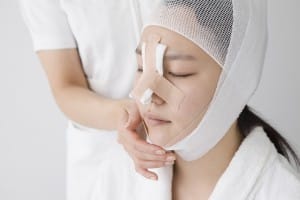 There are several potential complications involved when one decides to get a nose job. Rhinoplasty carries with it a variety of risks. These risks include but are not limited to: breathing disturbances, infections, and postoperative deformities (Rettinger, 2007). Complications are not necessarily common. Rather, the risk of having complications is decreased significantly when the plastic surgeon has more experience.
There are several potential complications involved when one decides to get a nose job. Rhinoplasty carries with it a variety of risks. These risks include but are not limited to: breathing disturbances, infections, and postoperative deformities (Rettinger, 2007). Complications are not necessarily common. Rather, the risk of having complications is decreased significantly when the plastic surgeon has more experience.
Breathing Disturbances
Head and neck surgery can have serious consequences. For example, Joan Rivers “stopped breathing during a surgery on her throat” (Zupkus, 2014, pgh. 1). Getting surgery on one’s nose can cause a major complication with regard to breathing.
Infections
Infections like MERS are common in hospitals. It might be good to take extra precautions against spreading germs if getting the procedure done in a hospital. The doctors should make sure the operating room area is a sterile environment, which goes without saying.
Postoperative Deformities
It is possible that during this type of surgery, the flesh of the nose itself does not heal properly. This can cause postoperative deformities. Hopefully they are not serious. One can never be too careful.
Be aware that the risks of complication in getting nose surgery include having breathing disturbances, infections, and possibly even postoperative deformities.
References
Rettinger, G. (2007). Risks and complications in rhinoplasty. GMS Current Topics in Otorhinolaryngology, Head and Neck Surgery, 6, Doc08.
Zupkus, L. (2014). Joan Rivers hospitalized following throat surgery, reportedly in stable condition. Retrieved 22 July 2015 at http://www.huffingtonpost.com/2014/08/28/joan-rivers-hospitalized_n_5730092.html.
How experienced is your plastic surgeon in performing rhinoplasties?
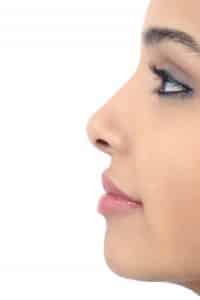 Getting and experienced rhinoplasty surgeon can be hard. This is because rhinoplasty is a hard and complex cosmetic surgery to perform. The plastic surgeon you prefer to work on your nose should have performed a large number of successful rhinoplasties annually. Go through the previous patients’ background and ensure that the surgery performed by your plastic surgeon was a success. Normally, an experienced rhinoplasty surgeon should be good at ear cartilage grafting as well as rib cartilage grafting. An experienced surgeon should first show you a perfect simulation on the nose job to be done.
Getting and experienced rhinoplasty surgeon can be hard. This is because rhinoplasty is a hard and complex cosmetic surgery to perform. The plastic surgeon you prefer to work on your nose should have performed a large number of successful rhinoplasties annually. Go through the previous patients’ background and ensure that the surgery performed by your plastic surgeon was a success. Normally, an experienced rhinoplasty surgeon should be good at ear cartilage grafting as well as rib cartilage grafting. An experienced surgeon should first show you a perfect simulation on the nose job to be done.
Rhinoplasty surgeons are different. Ensure that your plastic surgeon is ideal for your nose. They should have more than five years’ experience in the nose job field. An ideal surgeon is one that can perform advanced techniques such as open rhinoplasty. You could perform an extensive background research on your surgeon’s credentials. Ideally, your surgeon has to be certified either by the board of plastic surgery or otolaryngology.
While viewing the simulated results of your nose job, the surgeon has to show you before and after results of previously done rhinoplasty surgeries. By viewing this result, you can tell whether the surgeon is experienced or not. A bad nose job could not only make you look bad but could also affect your health since the surgery involves contact of the blood vessels. A wrong nose operation could even cause death. Ensure that your plastic surgeon is experienced before performing rhinoplasties.
Facial Lesions
The majority of our everyday communication requires us to look into faces and use our own face to talk, read facial expressions and generally convey and decipher meaning behind the words we say to one another. Therefore, it is hardly surprising that we want our faces to look their best – after all, this is the most central part of our anatomy and it is closely inspected by friends, family and complete strangers every day of our lives. There are many methods to keep our faces looking their best and even to improve on what nature endowed us with. Plastic surgery procedures such as rhinoplasty, face lifts, eyelid surgery as well as non-surgical solutions such as laser skin resurfacing and chemical peels are all aimed at making us looking more beautiful and giving us confidence to face new acquaintances with a smile.
However, for some people plastic surgery goes beyond small improvements to make them appear a bit more youthful. Patients suffering from facial lesions have to deal with stares from passers-by and uncomfortable encounters on a daily basis. As there is no easy way of covering up facial lesions, especially if they are located centrally and over a large area of the face, it is hard to avoid them being noticed. Many people suffering from facial lesions report that they feel a difference in the way they are treated by other people compared to their lesion-free friends. They believe that people who are looking at them are made to feel uncomfortable and are repulsed by their facial lesions and this in turn makes communication awkward and often unpleasant for both parties. Now a study conducted by the John Hopkins School of Medicine suggests that people suffering from facial lesions might be right about other people’s negative perceptions.
In the study 120 random people were asked to look at photos of different faces. The photos varied and included people suffering from small as well as large lesions both pre and post cosmetic plastic surgery. In addition, these photos also included people without any facial lesions at all. The participants of the study were then asked to rate the images on a scale of 0 – 100 keeping in mind a number of criteria including their comfort level when looking at the photos. 0 indicated that they were the least comfortable and 100 indicated that they were completely comfortable with the images shown. The researchers found that although facial lesions certainly had a negative impact on peoples’ comfort level, images of people who have undergone plastic surgery to correct their lesions scored much higher on the comfort scale. The researchers commented: “[The study found that] observers are less comfortable communicating with people who have facial lesions. Surgical reconstruction of facial lesions increased observers’ comfort in conversing with people with facial lesions, an impact that varied with lesion size and location.”
Though patients suffering from facial lesions have a harder time when communicating with people, plastic surgery can offer a solution that will not only make patients feel more confident in their own skin but will also help to positively affect the people they come into contact with in the future.


